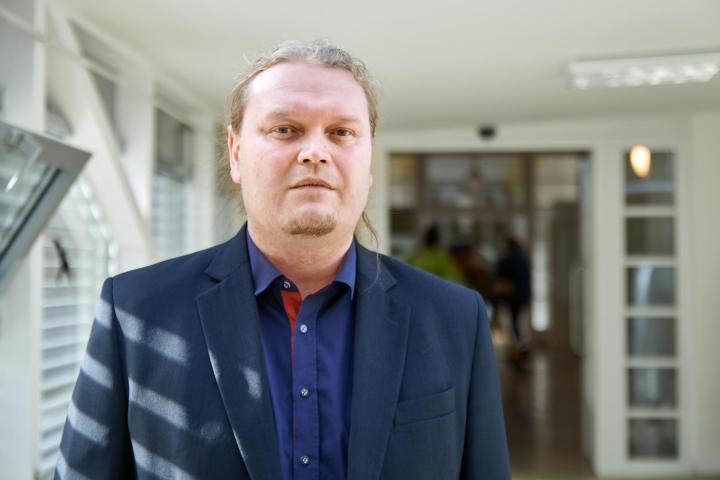
One of the sleep disorders is REM sleep behaviour disorder, which is dealt with by scientists from the Neurological Clinic of the 1st Faculty of Medicine of Charles University and the University Hospital of Prague and the research group of doc. Jan Ruzs from Faculty of Electrical Engineering of Czech Technical University in Prague. They are investigating how to replace expensive and capacity-limited diagnostics in the sleep laboratory and how to effectively search for this disease. REM sleep behaviour disorder in people over 50 years of age poses a high risk of Parkinson's disease and other types of Parkinsonism, such as dementia with Lewy bodies.
"Last year we already introduced a method of detecting early Parkinson's disease from voice analysis during speech and then from facial expressions," recalls doc. Rusz. "This year, we were able to extend the method and enrich it with automated linguistic analysis of short spontaneous speech. This works on the principle of transcribing audio recordings of speech into written text and then using modern artificial intelligence methods to analyse the structures of sentences, words and phrases in order to understand the context and meaning. In the future, spontaneous speech could then be analysed directly during conversations on smartphones, which would further improve accuracy," explains doc. Rusz.
Thanks to the project on which doc. Ruzs' team has been working on for 7 years together with Italian, French, Austrian, German, American and Canadian colleagues, the researchers have found that by analysing language and speech they are able to predict the development of Parkinson's disease as early as 3 years before clinical diagnosis. As language impairment is closely related to cognition, the key finding was that language analysis is able to predict whether patients will develop Parkinson's disease with or without dementia. This plays an important role in the prognosis of the disease, but also in the correct selection of patients for clinical trials aimed at developing neuroprotective treatments. The method was already this accurate based on a short monologue that lasted less than 2 minutes. The paper that resulted from the collaboration was accepted for publication in one of the most prestigious neurology journals, Annals of Neurology.
The quality of sleep is influenced by the microbiome. It applies the other way around
Another factor that may be related to some sleep disorders is the composition of the gut microbial flora, called the microbiome. This is because the gut microbiome influences brain function and therefore the regulation of sleep and wakefulness. At the same time, the opposite regulation exists, where changes in the microbial composition of the gut microbiome occur in response to circadian rhythms. Thus, the gut microbiome regulates sleep and is influenced by sleep. The production of various microbial metabolites, in particular intestinal neurotransmitters and short-chain fatty acids, is very important for the regulation of sleep and wakefulness by gut microbes. Unraveling the effect of specific microbial metabolites on sleep regulation could help in the treatment of sleep disorders.
The relationship between changes in the microbiome and diseases with excessive daytime sleepiness, so-called central hypersomnia, is the subject of a collaboration between the Institute of Microbiology of the CAS (IM CAS) and the Neurological Clinic of the 1st Faculty of Medicine of Charles University in Prague and the University Hospital of Veterinary Medicine. Janet Ježková. "We have found that patients suffering from central hypersomnia have a different representation of gut bacteria compared to healthy controls," says Mgr. Ježková from IM CAS, who is also a postgraduate student at the 1st Faculty of Medicine of the Charles University. "This difference is due to the different BMI values, age, gender and diet of the study groups," adds Mgr. Ježková. The study was recently published in the prestigious international interdisciplinary sleep journal Sleep Medicine.
As the prevalence of sleep problems increases, so does the interest in sleep monitoring. Under many a Christmas tree, there is sure to be a smartwatch that monitors both the length and quality of sleep. "In the our practice, we occasionally look at the output from smart devices. The processing and graphical outputs of each device vary, some are more reliable, some less so. We do not recommend these devices for anxious patients, because constant monitoring of sleep information worsens their problems," explains Prof. Karel Šonka from the Neurology Clinic of the 1st Faculty of Medicine of the Charles University. It is possible that in the future miniaturized registration devices will replace the classical polysomnography performed in the sleep laboratory, and that one day the results from smart portable devices will be sufficiently correct in all individual cases. For now, however, doctors rely on detailed questioning of the patient and his or her surroundings, and in selected cases, indicate special tests to sleep clinics or sleep laboratories. Only in this way can they record all the parameters important for identifying changes in sleep and sleep disorders.
The cooperation of scientists from different departments and branches, together with the use of modern technologies, brings patients closer to faster diagnosis and better treatment. In the future, other recording and analysis devices targeting biological functions will undoubtedly help in the search for many diseases. Artificial intelligence will simplify some procedures and improve the accessibility of diagnosing certain diseases. For now, however, the diagnosis of sleep disorders will certainly not be possible without information from patients and the work of experienced doctors.
Illustration photography can be found here. Courtesy of: Petr Neugebauer, CTU FEL